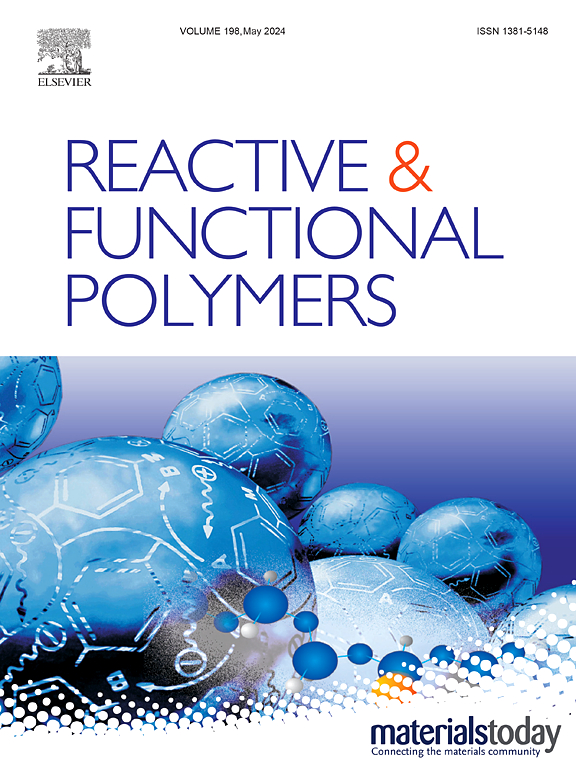Synthesis of size-controlled poly(vinyldiaminotriazine) nanoparticles for enhanced hydrogen bonding adsorption of horseradish peroxidase
IF 4.5
3区 工程技术
Q1 CHEMISTRY, APPLIED
引用次数: 0
Abstract
Physically adsorbing proteins through functional polymeric nanoparticles hold great potential for a variety of applications. Achieving strong and stable adsorption via hydrogen bonding in aqueous phases is challenging due to the interference from water molecules. The monomer 2-vinyl-4,6-diamino-1,3,5-triazine (VDAT) not only provides donor and receptor sites for hydrogen bonding but also possesses an apolar nature that can help prevent water molecules from interfering with these bonding sites. In this work, poly(vinyldiaminotriazine) nanoparticles (PVDAT) with sizes ranging from approximately 50 nm to 240 nm were synthesized through semi-continuous precipitation polymerization in water. The formation mechanism of PVDAT, including particle nucleation and growth stages, was investigated. VDAT oligomers aggregated to form a core and subsequently grew by adsorbing additional VDAT oligomers. Adsorption studies of PVDAT on horseradish peroxidase (HRP) demonstrated stable physical adsorption facilitated by hydrogen bonding between PVDAT and the enzyme in the aqueous phase. The adsorption of HRP by PVDAT followed the Langmuir model of single-layer adsorption, with a maximum adsorption capacity of 13.80 mg/g and a retention of enzymatic activity of ∼74.99 %. This innovative approach aims to enhance the precision and efficacy of protein separation and extraction, as well as the efficiency of enzyme immobilization.

求助全文
约1分钟内获得全文
求助全文
来源期刊

Reactive & Functional Polymers
工程技术-高分子科学
CiteScore
8.90
自引率
5.90%
发文量
259
审稿时长
27 days
期刊介绍:
Reactive & Functional Polymers provides a forum to disseminate original ideas, concepts and developments in the science and technology of polymers with functional groups, which impart specific chemical reactivity or physical, chemical, structural, biological, and pharmacological functionality. The scope covers organic polymers, acting for instance as reagents, catalysts, templates, ion-exchangers, selective sorbents, chelating or antimicrobial agents, drug carriers, sensors, membranes, and hydrogels. This also includes reactive cross-linkable prepolymers and high-performance thermosetting polymers, natural or degradable polymers, conducting polymers, and porous polymers.
Original research articles must contain thorough molecular and material characterization data on synthesis of the above polymers in combination with their applications. Applications include but are not limited to catalysis, water or effluent treatment, separations and recovery, electronics and information storage, energy conversion, encapsulation, or adhesion.
文献相关原料
公司名称
产品信息
麦克林
Horseradish peroxidase
阿拉丁
2,2′-azobis (2-methylpropionamidine) dihydrochloride
 求助内容:
求助内容: 应助结果提醒方式:
应助结果提醒方式:


